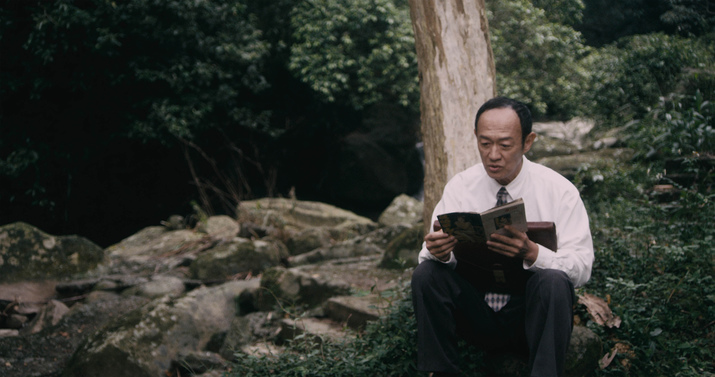-
From Current Issue
-
- Editor’s Letter Fire in the Heart
- Reviews I Gusti Ayu Kadek Murniasih
- Reviews 11th Seoul Mediacity Biennale: “One Escape at a Time”
- Dispatch Networked China
- One on One Monira Al Qadiri on Yukio Mishima
- Essays The rise of independent art spaces in pandemic-era Shanghai
- Features Tuan Andrew Nguyen
- Table of Contents
- Web Exclusives
- Archive
- Subscribe

R
E
V N
E
X
T
Installation view of SU HUI-YU’s The Women’s Revenge, 2020, five-channel video installation: 12 min, at “The Cinema of Séance,” 1646, The Hague, 2021. Courtesy 1646.
One in a black leather bodysuit, others wearing deep-cut dresses of red sequins or white cotton, and collectively flanking a figure with a bejewelled eye patch, five women come for you on a rainy night to the march of militant music. Wielding silver baseball bats, they multiply through different camera angles displayed across five hanging screens. Interspersed between flashes of black, men’s faces appear screaming as they are beaten bloody amid a murderous rampage. In the aftermath, fog drifts across their bodies, scattered on the floors of a slaughterhouse in a tantalizing scene of sadistic violence so visceral it was almost as if the gallery itself had the smell of an empty meat locker.
An homage to the sexploitation films of the 1980s, Su Hui-Yu’s The Women’s Revenge (2020) is unlike its inspiration in that one only sees the climactic scene of revenge, not the sexual violence that prompted it. As a single-channel film, it competed in the Ammodo Tiger Short Competition in this year’s edition of the International Film Festival Rotterdam before the multichannel version found its way to the 1646 experimental art space in The Hague for “The Cinema of Séance,” the Taiwanese artist’s first solo exhibition in the Netherlands. Along with The Women’s Revenge, the exhibition brought together four pieces, with three moving-image works that “reshoot” 1980s Taiwanese sexploitation films or Black Movies.
In the two-channel film Super Taboo (2015), the camera-eye moves smoothly and sensuously across a diorama set in the forest by a gushing stream. Actor Chin Shih-Chieh role-plays an urban white-collar worker reading a pornographic “small book” (xiaoben). The plots escape in a whisper from his breath, unfolding from his imagination onto the natural landscape around him. An underground network of pornography—both in print and moving images—had circulated during the 38-year Martial Law period (1949–87) imposed by the Kuomintang, and for Su, it becomes the ultimate site of desire where a nation bursting to reopen could explore the possibilities of power despite a complete loss of control in civil life. Another example of this sexual-political psychodrama is exemplified in The Glamorous Boys of Tang (Chui Kang-Chien’s, 1985) (2018), in which Su reshoots the cult film to fantasize on that which may have been censored—by the state or the self. Like the original, Su’s film opens with a Tang dynasty exorcism ceremony, and progresses through elaborately costumed scenes of torturous deaths and ritualistic orgies. The beauty of the two pretty boys and the erotic tension between them is captivating amid the orgies and murder. Su stages a diorama of scenes that he imagines never made it into the final cut of the eponymous original.
It is uncommon for artists today to work directly in the genre of pornography. In interviews, Su has described the process of building trust and articulating desire that is necessary for filming explicit adult content. By working primarily with practitioners of BDSM in lieu of actors, Su writes over the narratives that he chooses to appropriate as well as the mechanisms of the pornography industry, so that what he presents us with are not merely representations of contemporary queer alterity but records of power renegotiations. The works themselves become expositions of consent and sex positivity today, portraying an existing scene in all its life-affirming dynamics. The name of the exhibition comes from scholar Julian Ross’s essay on Su’s work, “Midnight Séance,” which describes Su’s work as an homage to the forgotten ghosts of film history. In Su’s “The Cinema of Séance,” the rites and resurrections necessary in a séance bring to mind what the BDSM community calls “ritualized codependency,” a playing with power for the fun of it at a time of immense repression.
Su Hui-Yu’s “The Cinema of Séance” was on view at 1646, The Hague, from June 5 to 27, 2021.
To read more of ArtAsiaPacific’s articles, visit our Digital Library.














